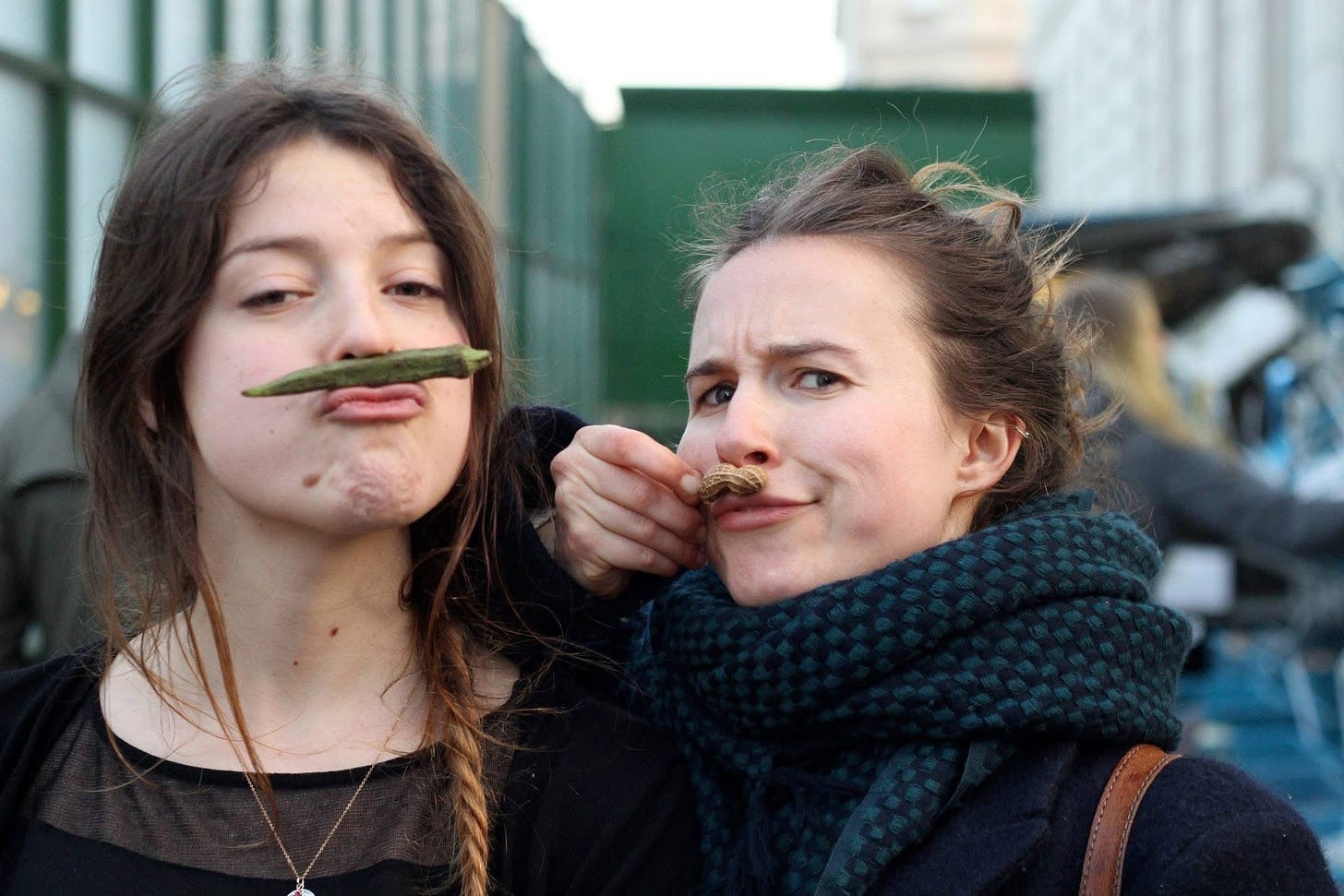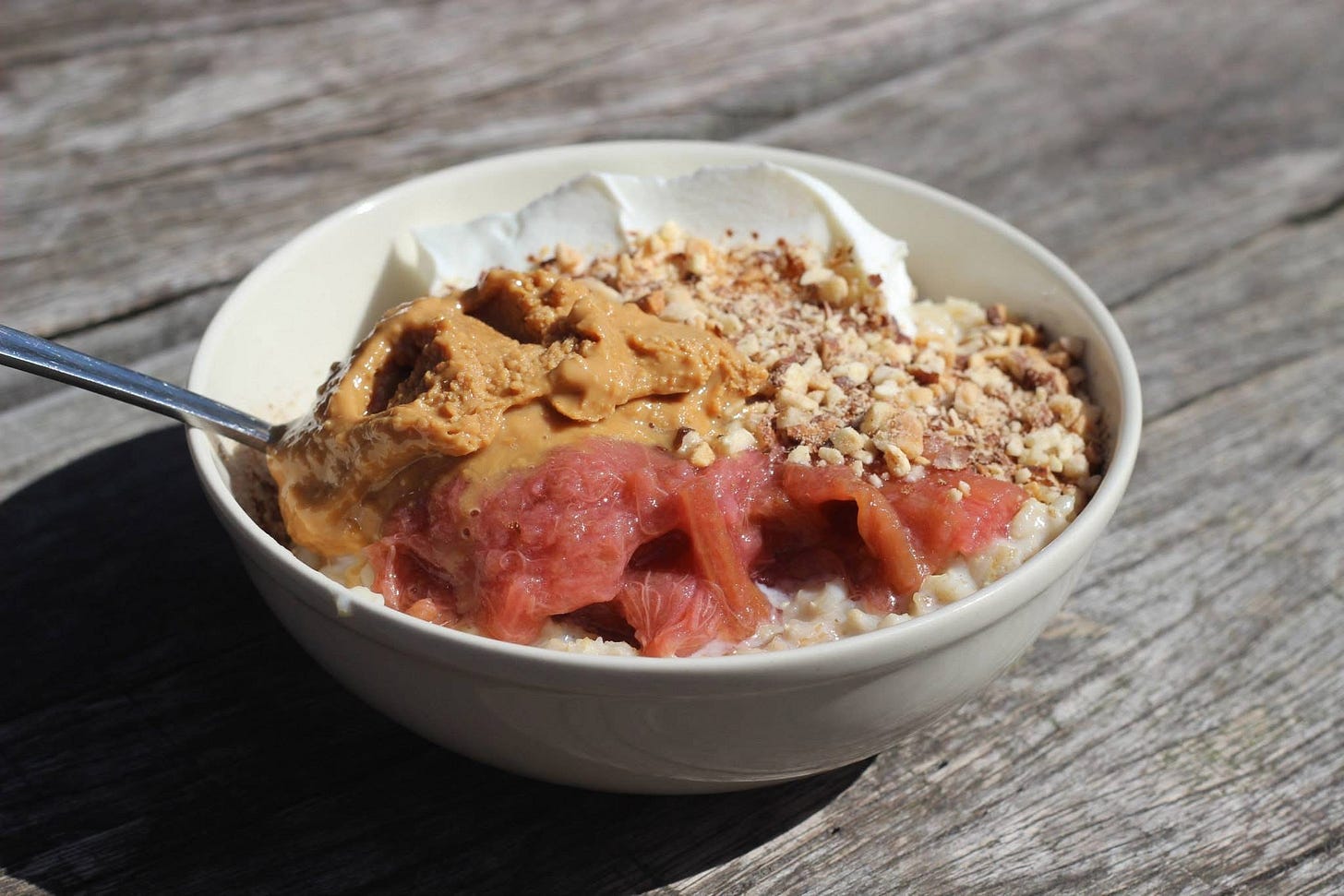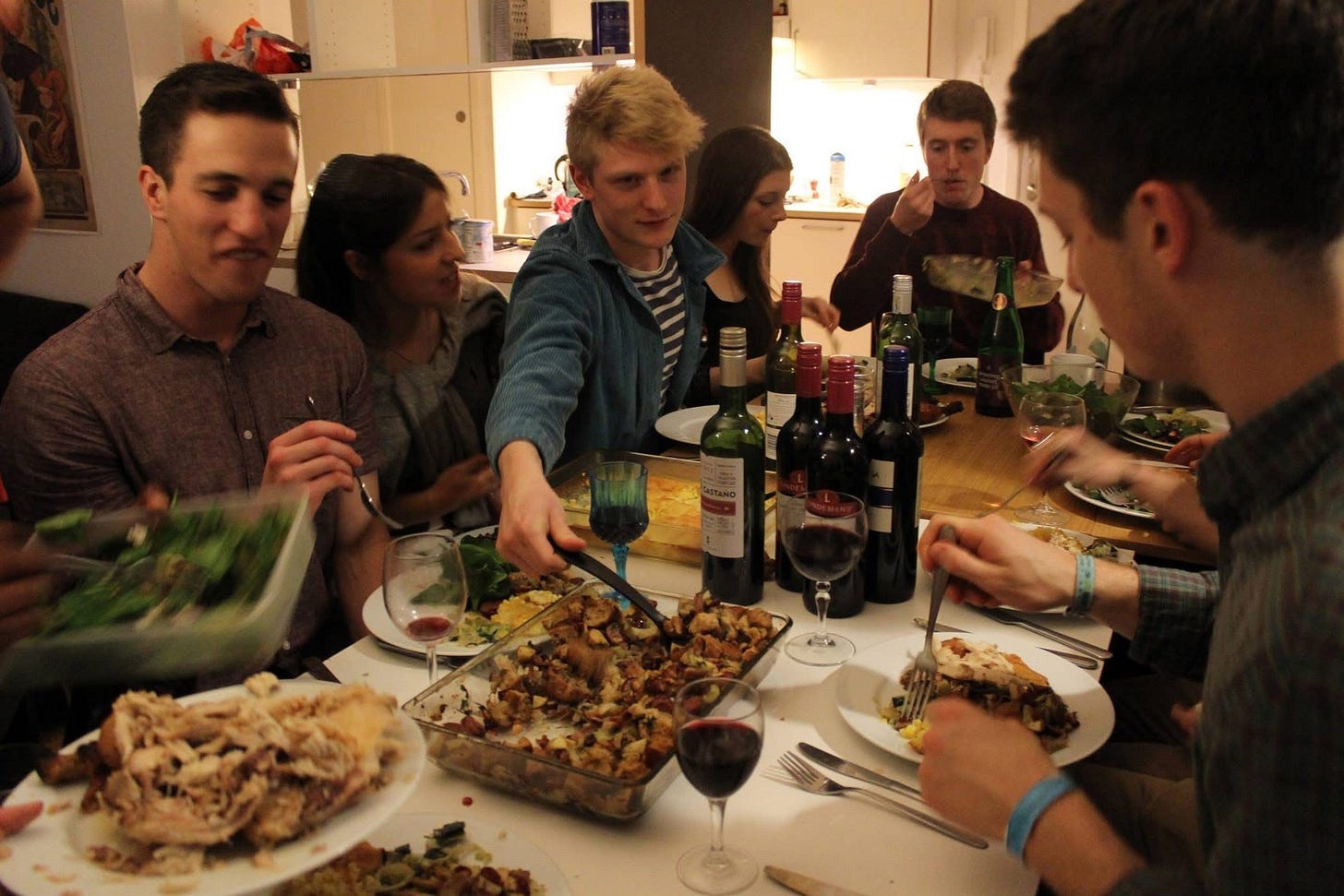When I think about Clapton, I start to dream of Copenhagen. Beyond both beginning with ‘C’, I urge you to hear me out on this curiosity, not too dissimilar from the riddle of Haruki Murakami’s book title ‘What I Talk About When I Talk About Running’. It starts with my struggles with another ‘c’ - cartography.
If you asked me - like I’m currently asking myself - to map the local neighbourhood where I live with google earth-like precision, I’d struggle. I can visualise well trodden routes and frequently visited locations when I close my eyes. Like the route I take to my friend Delia’s house (right out of my front door, quickly left onto Elderfield Road, then right up the slight incline of Glyn Road until the corner with the convenience store Ishi Express. Take a sharp left down Ashenden Road and go all the way down. I’ll stop there, thanks very much; any further is a bit creepy). I could direct you to the 308, 242, 55 and 56 bus stops respectively, or along the 10 to 20 minute walk (depending on the weather and how late I am) to Homerton overground in one direction, Clapton the other. I’ll tell you the way to any of my local cafes, the book shop, the gym, and all of five nearby pubs. The 7 km loop I run through Walthamstow marshes to Markfield Park and back I routinely stick to is, by design, reassuringly easy to follow. I’ll tell you two of the most well cycled routes out of the area, following the tributaries to ‘destination’ neighbourhoods, like Dalston and beyond. But to map or describe the immediate landscape that sprawls from my home (the POV from which everything in my imagination spills from) is almost impossible.
For the sake of this Substack and to confront this failure of imagination, I’ve started to make deliberate walks from my house without end destinations in mind. I’ve become an explorer in my immediate neighbourhood in which I have lived for the last two and a half years. I begin one evening cycling home from Stratford, veering off the canal blanketed in impenetrable black night sky, over the bridge that overlooks ‘Costa del Clapton’ (named by local resident Merle, because of its slither of riverside flowerbed that gets drenched in unblocked sun), onto the home run. It’s quiet and it’s 9pm. It’s late for dinner but not so late that I am beholden to a direct and unrouteable return to my front door. Without thinking I veer right onto Ruby Close and cycle up and down, taken aback by the street’s distinctive detached chalet like architecture which differs markedly from the local Victorian terraced houses and ubiquitous brown brick estates. Like a bored teen wheeling around aimlessly, I goggle at the big camper vans parked next to children’s electric 4X4s that line the street, before working through its conjoining passages.
As I do so, two thoughts come to mind: has my cat been here before? And, secondly, I begin to think of Copenhagen, where I lived for a year in 2014. It occurs to me that through that year, gifted by Erasmus (now defunct to British citizens - RIP), I existed more akin to a flaneur than I likely ever will again, exploring for exploring’s sake, on the hunt for adventure.
A simple memory arrives with crystal-like clarity: running around the central lakes late on a humid summer evening around 10pm with an unfamiliar ease. I remember the exhilaration of being so free that, why wouldn’t I go for a run at this time? (Although, now ten years older with a decade of accrued cynicism under my belt, I can suggest many reasons why not). As trivial as it seems, running at night felt like a small transgression: doing something so habitual but done topsy-turvy, because, why not? Then, I operated solely on time belonging to me. Although no more risqué than Theresa May’s daring admission of running through wheat, the memory makes me nostalgic for a schedule unmoored by expectations or routine, for days in which I exist totally unknown by anyone else. Daily and achievable transgressions like these are less familiar to me now, but reacquainting myself with my neighbourhood for this project, primarily through walking and observing, invites in a renewed possibility for these small moments of magic, contraventions opening me up to surprise.
Incidentally, this year in Copenhagen was also responsible for igniting my love of cooking.
For me, Copenhagen’s terroir is: bike rides in search of cinnamon rolls; an all you can eat breakfast buffet where we’d fill bowls with mountains of unlimited nut butters, disbelieving of our luck; the clatter of trays in cafeterias at galleries and my university faculty, where I sampled infinite toppings on seedy rye bread - otherwise known as smørrebrød, or open sandwiches - and where, for the first time, I became conscious of portion sizes, paying for food by the weight of my plate; food that was brinier, more pickled (herring), more earthen (beetroot, potato salads) and served with more rémoulades, mayonnaise, dill and blue cheeses than I’d otherwise experienced. Manic city tours with visiting guests, hopping from one bakery to the next (and the next). And end of the night visits to Five Stars in Nørrebrogade, an Indian kebab shop which sold a paneer and chip wrap that remains unrivalled still today. Or attempting to sate an insatiable appetite after getting high in Christiania, the city’s so-called anarchist free town, by piling through crisps with novel flavours. It’s also a time where I learned the true pleasure of good butter, piles of it whipped into creamy peaks served at every respectable restaurant. It’s also when I tried, unsuccessfully, to be au fait with a platter of duck hearts served in a room with the most beautiful and sophisticated people I’d ever seen. It is no coincidence that it was the year that I (officially) ended fifteen years of vegetarianism, memorialised by eating a burger with friends - an experience that ended in downing a frightening amount of milkshake to extinguish the fire in my mouth I’d self-inflicted eating the burger’s decorative chilli.
But mostly, it was a year in which I cooked more meals with new friends that I can ever hope to remember. In that one year I lived in four flats with more or less the same people, with always one or two additions at a time. Evicted from the first flat for an unruly ‘tea party’ (this is actually true), we were flung from one charming but inappropriate flat to another. None of them ever had enough bedrooms and hugely varying degrees of furnishings. One flat lacked all basic furniture, including beds, wardrobes and a cooker, apart from one leather sofa that someone ended up urinating on drunkenly one night. Nine of those twelve months (yes, long enough to grow a real life human baby) were spent platonically sharing a bed - and at times, a futon - with my, now, dear friend India. Prior to becoming bedfellows, I had met India only once meaning that we ended up acquainted ourselves with the now hackneyed term ‘hygge’ with alarming intensity. If anyone tells you rent is affordable in Copenhagen, they’re lying (perhaps one contributor to the essence of the much renowned Scandi aesthetic that is its sparseness).
But despite all these shortcomings, the cooking was decadent and unabating. It began, with almost religious regularity, with a cauldron of porridge - or grød (admittedly still one of the only Danish words I can actually recall) - every morning, lathered in those inspired nut butters and a rotation of fruit combinations of which only became more extravagant and avant-garde as the year went on.
In particular, my Australian flatmate Mia introduced novel sophistication to my life, teaching us how to make things like hasselback potatoes and a plethora of aubergine based dishes including, most memorably, a parmigiana, that acquired more and more cheese as we grew more confident in its making. I would watch Fern, my formidable and aloof Venezuelan-New York flatmate, cook rice with lentils, a dish that pleasingly discombobulated everything I had known about combining carbohydrates. And the days of the gingerbread, that still haunt me today. At the end of what we considered to be a quintessential gingerbread house making workshop, we took home and froze an unhinged doggy bag of raw gingerbread dough. For weeks, perhaps months afterwards, nights out ceremoniously ended back in the flat by hacking off and microwaving portions from the frozen lump, eaten on the still piss-stained sofa.
It was a year of culture (relative to twenty year students unleashed abroad) and gluttony in equal measure, spent intimately mapping this city through our bellies. I have not been back to the city since. There’s no question that my navigational skills - albeit it by bike, foot or underground - are long gone, but I have no doubt that my own connections would soon come floating back haphazardly, like the undeniably comforting waft of baked cinnamon buns (or gingerbread, for that matter).
The terroir I have described is personal, as is all terroir. It’s like a messy zen diagram between place, taste and yourself, each segment of which splintering into a thousand more threads, some of which are knotted together whilst others remain distinct. Thinking about my relationship with where I lived took me on a surprising journey to another place I’d been at another time of my life. Our imaginations are, after all, an unknowable matrix, furtive to tangential thinking.
We layer memories onto places kaleidoscopically, smudging, sliding and squirming in and out of consciousness, jolted by images subliminally hardwired with references that breadcrumb us elsewhere. Less surprisingly, this prismatic way of thinking found its way back to my stomach: smell and taste are hugely evocative contributors to memory making. Such is the way of terroir: me, a place, my taste, percolating in a soup of memory in unruly and sometimes revealing ways. There are some constituent parts that define places (its climate, perhaps) and taste (sugar content, maybe), but even these cannot be extrapolated from the film of memory through which they’re known.
But terroir is not only built by self-narratives. Later in the series, I want to explore how terroir can become a collective story, through which our personal experiences of taste are partially made by the public. What narratives about Hackney inflect its taste for me? If memories are mutable, then terroir can just as easily lend to something less subjective, defined elsewhere. One way in which this is constructed is through branding and design. In an essay I wrote for the design magazine Disegno about the alcoholic spirit sotol (produced in the borderlands between Mexico and Texas), I explored terroir as a device:
“In a paper about the contestation of wines grown around national borders, anthropologist Daniel Monterescu describes terroir as “the palatable characteristics of place as a branded story of geographic distinction.” Physical characteristics are important, but storytelling and design – the soaring eagles and apparitions of Carvajal’s video – also help to thread taste and value into a cohesive narrative about the culture it espouses. Terroir becomes an organising principle that delineates edible authenticity from non: good vs. bad; tasteful vs. tasteless; real vs. fake.”
But in the meantime, I’ll next be exploring terroir more pragmatically, with a deep-dive into it’s most influential arbiter: soil. This will include an interview with the wonderful duo that is The Land Gardeners, who have most recently curated Somerset House’s current SOIL exhibition. I hope you like it!
If you missed it, you might want to go back to this series’ introduction, found here. If you want to follow my project into the relationship between taste and place then you can do so by clicking here:







I love this nostalgic piece of writing